Upcoming Festivals in India
Check this article for Upcoming festivals in India. India is a country having rich culture and tradition, where almost all the day is a celebration. People’s lives are integrated to festivals, which are based on culture, religion, believes etc. These are wonderful time for fun and social rejoicing. This article let you know more about some important festivals in India.
Festivals, in a means are the reflections of culture and tradition of places, which we believe, that brings happy, fortune, joy and brotherhood. These are the wonderful occasions for family get together and mental refreshment and also a time for fun and social rejoicing. They are synonymous with dancing, singing, feasting, athletic events and carnivals.
There are many kinds of festivals in India. Though many have religious origins, others involve seasonal change, or have some cultural significance. Some of the important festivals in India are given here.Diwali : Festival of lights
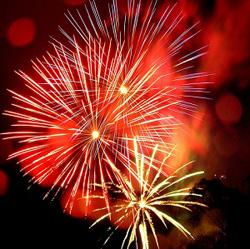
Meaning of word Diwali is row of lamps.The word Diwali comes from the Sanskrit word Deepavali. It is a festival were you can see twinkling lights everywhere you look. This festival is celebrated almost all over India on a new moon light in October or November, but different regions have different reasons for the festival.
In North India, Diwali is a five day celebration. The first day, Dhanteras, is the day to buy new clothes, and ornaments. The second day celebrates the victory of Lord Krishna over the demon Naraka, and the highlight of the day is the oil bath that everyone takes. The third day is a day devoted to the worship of Lakshmi, Goddes of Wealth. On the fourth day the Govardhan Mountain, is worshiped. Finally, the fifth day is Bhaiyadooj, when women invite brothers and their families for lunch, and are given gifts in return.
Diwali also celebrates the return of Lord Rama to Ayodhya after fourteen years of exile, and homes are lit with lamps to welcome him home. In South India, it is the victory of lord Krishna over the demon Naraka that is important.
Diwali is basically a family festival, a time of relatives to meet, and exchange sweets and gifts. New clothes, the thunder and brilliance of fireworks, the dancing flames of earthenware pots called diyas, greeting cards and visitors…… all make Diwali truly India's favorite festival !Holi : Festival of colours
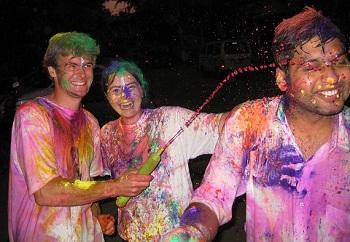
Holi is celebrated on the day after the full moon in early March every year. It is the time when the crops have been harvested, and it is time to have some fun! The festival begins on the previous night, which is the night of the full moon. The following morning, the streets are filled with people running, giggling and splashing coloured water or powder on each other.
The story of Holi centres on a arrogant King Hiranyakashipu who resents his son Prahlada worshipping Lord Vishnu. The king's sister Holika is sent to burn the body to death. However, the prince Prahlada emerges unscathed from the flames, while Holika is burnt to death. Huge bonfires are burnt on the eve of Holi to symbolize the destruction of the wicked Holika, for whom the festival was named.Pongal : Festival of harvest
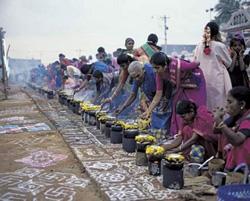
Pongal is an important festival in South India. It is a harvest festival which falls in the month of January, and last for three days. It is also celebrated as Makara Sankranti in many states, to mark the beginning of the sun's northward journey.
The first day of Pongal is celebrated as Bhogi Pongal. It is celebrated in honor of Lord Indra, the supreme ruler of the clouds that give us rain. The second day of Pongal is known as Surya Pongal,is dedicated to the Sun God. A special dish is cooked on this day, which is also called Pongal. A new mud pot is beautifully decorated, and rice is cooked in it until it boils over. The moment the rice boils over and bubbles out of the vessel, a conch is blown amidst shouts of 'Ponggalo Pongal!'
The third day is Mattu pongal, which is a festival honoring cattle. Cattle are washed and their horns are painted and covered with shining metal caps. Multi-coloured beads, tinkling bells, sheaves of corn and flower garlands are tied around their necks. It is a day that is full of fun and revelry.Shivarathri
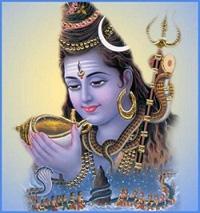
Shivarathri is a Sanskrit phrase which can be literally translated as 'The Night of Shiva'. It is said to be the night when the Lord performed the Tandava Nritya or the Cosmic dance.
The festival is observed for one day and one night only. This day is determined according to the Vedic calendar system, and generally falls in February or March. According to the Puranas, during the great mythical churning of the ocean called Samudra Manthan, a pot of poison emerged from the ocean. It could destroy the entire world. To avoid this, Lord Shiva drank the deadly poison. But he held it in his throat instead of swallowing it. Thus turned his throat blue, and since then he came to be known as Nilkanda, the blue-throated one. Shivarathri celebrates this event by which Lord Shiva saved the world.Ganesh Chathurthi
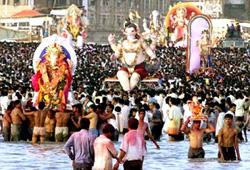
Ganesh chathurthi is celebrated as the birthday of Lord Ganesha. It is a ten day long celebration that falls sometime in August or September. Ganesh chathurthi is celebrated all over India, but with the greatest fervor in Maharashtra. Classical dance recitals, music performance, poetry recitations, folk dances are the main features of this festival.
During this festival, beautiful idols of Lord Ganesh are worshiped in homes, and offerings of Lord Ganesha's favorite foods are made. Huge idols of Ganesh are also installed in public places. Some of them are more than twenty feet high. On the concluding day of the festival, the idols are taken in a grand procession and immersed in the sea.Onam : Festival of flowers
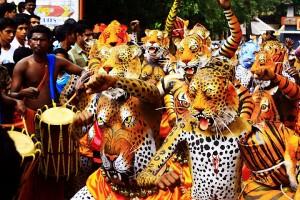
Onam, Kerala's main festival, falls in August or September, depending on the position of the stars. According to legend, long ago, a kind and wise king, Mahabali, ruled what is now Kerala. His rule was considered as a golden era, and joy and prosperity overflowed. The God grew very jealous of him, so, they asked Lord Vishnu to help them.
Lord Vishnu disguised himself as a Brahmin boy called Vamana and came to Mahabali's court. Vamana requested as much land as he could cover with three steps. Mahabali readily agreed to this request. Vamana then grew to an immense size, and with one foot, he measured the Heavens, with the next, the Earth. No land was left for the third step, so Mahabali humbly offered his own head, and placed Vamana's foot on it. He was pushed down to the nether world, but, was granted a boon, that he could visit his subjects again once every year. Onam is the festival that celebrates his visit.
For ten days a flower carpet called 'Pookalam' is laid in front of every house to welcome the coming of the beloved king. Traditional rituals are performed followed by a lavish feast. It's also the season of many cultural events, sports and carnivals.Vishu : Festival of crackers
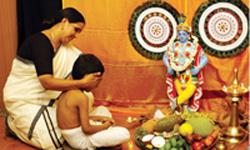
Keralites celebrate the Vishu festival on the first day of the Malayalam month of Medam, according to the calendar of the Malayalam Era. Keralites believe that the fortunes for the year depend upon the object they see first thing in the morning on Vishu day. In order to make sure that they see something auspicious, they prepare a 'Kani' or an auspicious omen on the previous day. This 'Kani' will be the first thing that is viewed the next morning.
'Vishu' is celebrated with more fanfare and vigor in North Kerala as compared to other part of Kerala. Bursting crackers is part and parcel of the celebration, especially for children. The elders of the family distribute money to the children and their dependants. These monetary gifts are called 'Vishukkaineetam' Akshaya Tritiya : Festival of wealth
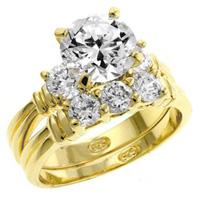
Akshaya Tritiya falls in the month of April or May, on a day on which the sun and the moon are both believed to be at their peak of brightness. This happens only once a year, so Akshaya Tritiya is said to be a most auspicious day.
Buying gold is a popular activity on Akshaya Tritiya, as it is the ultimate symbol of wealth and prosperity. Akshaya Tritiya is also believed to be the birthday of Lord Parasurama. People conduct special pujas on this day, bathe in holy rivers, offer charity, and worship Lord Ganesha and the goddess Lakshmi on this day. For the Jains, this day has special significance. The first Thirthankar, Bhagwan Rishabdev, broke his fasting spell of one year by taking sugarcane juice on this day.Nag Panchami
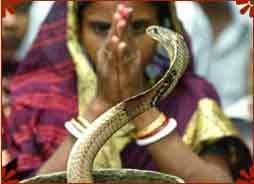
Nag-Panchami is an important all India festival and is celebrated in the month of Shravan, which falls in July or August. On the Nag-Panchami day, Hindus worship Naga Devata or cobras. Cobras are considered divine in Hindu mythology, and live cobras or their pictures are revered and religious rites are performed to seek their good will.
In Bengal and parts of Assam and Orissa, the blessings of Mansa, the queen of serpents is sought by worshipping her. On this occasion snake charmers are also called to attract the snake queen by playing lilting and melodious tunes on their flutes.
The most fantastic celebrations of Nag-Panchami are seen in the village of Baltis Shirale which is four hundred Kilometers from Mumbai. About a week before this festival, they dig out live snakes from holes and keep them in covered earthen pots. These snakes are fed with rats. Once the festivities are over, the snakes are released into the jungle.Raksha Bandhan : Festival of brotherhood
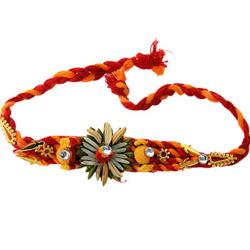
On Raksha Bandhan Day, you will see boys and men proudly wearing a red thread, rakhi, around their wrists. This thread is tied by their sisters, and Raksha Bandhan is a celebration of the undying bond between all brothers and sisters. It is celebrated on the full moon in the month of Sravana, which falls in August.
Indian history is replete with women asking for protection, through rakhi, from men who were not their actual brothers. The Emperor Humayun received a Rakhi from the Queen of Karmavati of Chittor who was being attacked. He responded by carrying out his sacred brotherly duty and protected her.Kumbh Mela : Act of faith
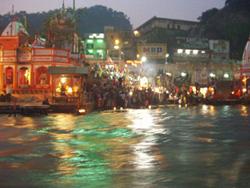
The Kumba Mela gained international fame as 'the world's most massive act of faith'. Pilgrims come to this holly event with such tremendous faith and in such overwhelming numbers that it boggles the mind. The Kumba Mela occurs four times every twelve years, and rotates among four locations-Prayag or Allahabad, Haridwar, Ujjain and Nashik. It is usually held in the months of January or February.
The devout believe that by simply bathing in the Ganges, one is freed from ones past sins. The major event of this festival is a ritual bath on the banks of the rivers in each town. Other activities include religious discussion, devotional singing, mass feeding of holy men and women and the poor, and religious assemblies.
Chariot festival of Puri
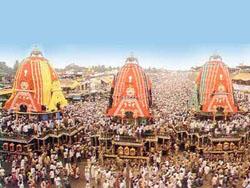
The Jagannath Rath Yathra or the chariot festival is observed in June or July at Jagannath Temple at Puri in Orissa. It celebrates the annual visit of the God to his birth place. Images of lord Jagannath, his sister Subhadra and brother Balbhadra are taken out in a procession in three immense chariots. On the day of the journey, the chariots are lined in front of the Puri Temple. Thousands of devotees pull these chariots to Gundicha temple 3 km away. After a week, the return journey of the Gods commences in the same manner. The huge chariot of Jagannath Rath Yatra has contributed a word to the English language 'juggernaut'. It means huge, powerful and overwhelming force or institution. Ram Navami
The birth anniversary of Lord Rama is celebrated on the ninth day in the month of Chaitra, which usually falls in March or April. In some part of India, it is a nine-day festival. The festival is celebrated with great devotion across the nation and every area has its own regional significance behind the celebration.
In some part of India, especially Bihar and Uttar Pradesh, public gatherings called satsangs are organized to commemorate the birth of Rama. Pilgrims flock to the temples of Ayodhya in Uttar Pradesh, where Rama was born. The day starts with morning ablutions, chanting Vedic mantras dedicated to Vishnu, and offering flowers and fruits to the God. In Northern India especially, an event that draws popular participation is the Ramanavami procession.
